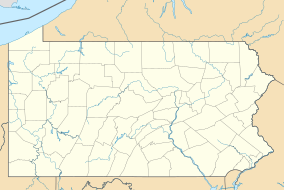History and notable features
Established in 1956, Powdermill serves as a field station for long-term studies of natural populations, and now forms the core of the museum's Center for Biodiversity and Ecosystems. The reserve encompasses 928.17 hectares, which includes forests (~891 hectares), fields (~21 hectares), developed land (~17 hectares), and ponds and streams (~0.36 hectares). [3]
It is located in the Laurel Highlands, 55 miles (89 km) southeast of Pittsburgh near Rector, Pennsylvania. [2]
Powdermill is well known for its avian research and is one of the longest continually-running bird banding stations in the United States. [4] Powdermill has also been contributing radio telemetry data for bird tracking to the Motus Wildlife Tracking System since 2016. [5] [6]
This page is based on this
Wikipedia article Text is available under the
CC BY-SA 4.0 license; additional terms may apply.
Images, videos and audio are available under their respective licenses.

